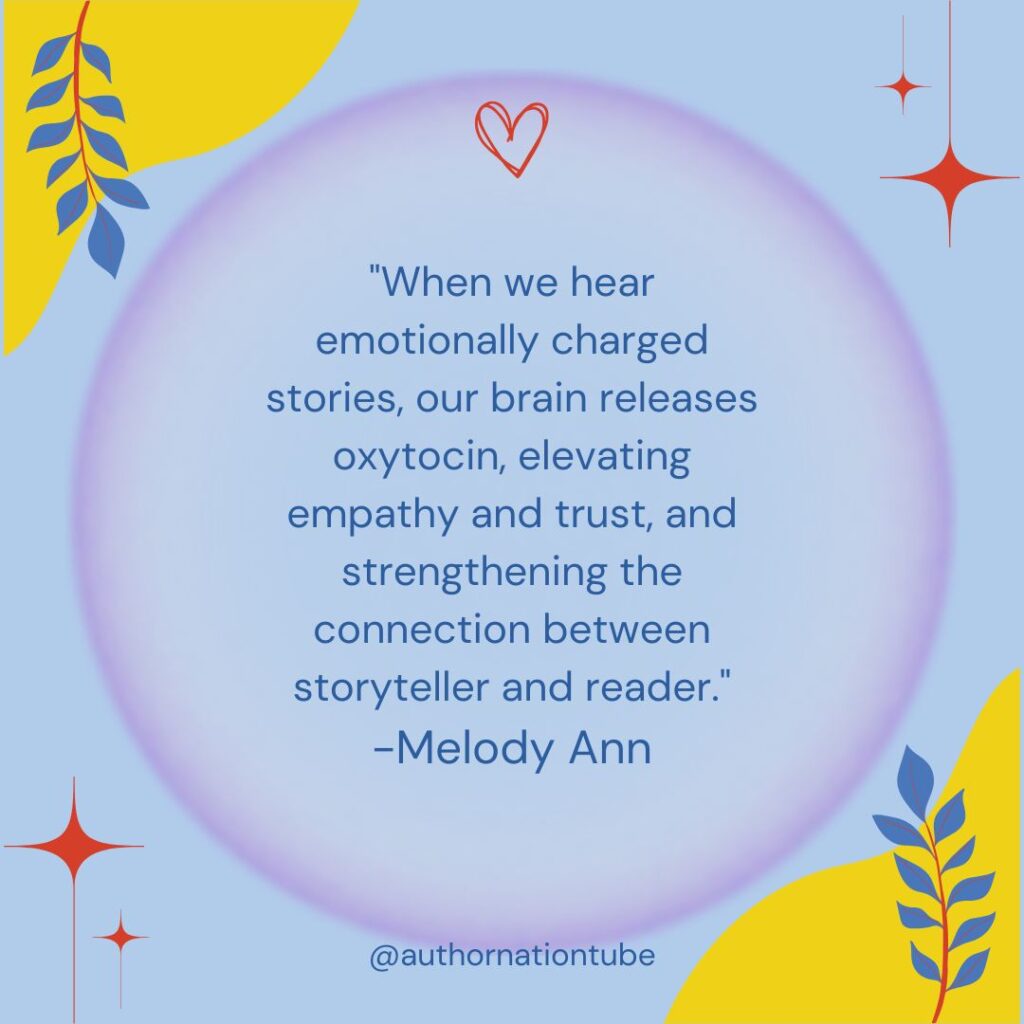Storytelling is more than just an art; it’s a scientifically-backed tool that can profoundly enhance how you connect with your audience. By understanding how stories interact with the brain, you can elevate your writing to engage, resonate, and remain memorable for your readers, and transform your writing with the science of storytelling.
Your Reader’s Brain on Stories: Activating Multiple Regions
When readers dive into a story, multiple areas of their brain light up. From sensory perception to emotions and memory, stories engage us on every level. Mirror neurons play a crucial role here, allowing readers to vicariously experience the story’s events as if they were their own. Whether it’s the exhilaration of diving into cold water or the heartbreak of a character’s loss, readers connect deeply, making storytelling an immersive experience.
This connection is not limited to fiction. Nonfiction authors can harness the power of storytelling to make their content more engaging and relatable, ensuring their message resonates with readers.
Building Trust Through Emotional Storytelling and Oxytocin
Emotionally charged stories do more than entertain; they foster trust and empathy. When readers encounter heartfelt narratives, their brains release oxytocin, a hormone associated with bonding and trust. This chemical reaction makes readers more likely to trust the storyteller and engage deeply with the material. As a nonfiction author, incorporating emotional stories into your work can create a stronger bond between you and your audience.

Want to finally publish your book and start making money from it? Download my FREE guide: Beyond the Book: 10 Profit Pathways for Authors here.
Enhance Memory Retention with the Power of Stories
Ever noticed how a story sticks in your mind better than a list of facts? That’s because storytelling activates the hippocampus, the brain’s memory center. Stories not only help readers retain key information but also leave a lasting emotional impression. For nonfiction authors, this means integrating stories can help your readers remember your core messages more effectively.
Simplify Complex Ideas Using Storytelling Techniques
Complex ideas can often feel daunting for readers, but storytelling makes them accessible. By weaving narratives into technical or abstract concepts, you engage both the cognitive and emotional centers of the brain. This dual engagement helps readers grasp and retain even the most intricate information. For instance, doctors, scientists, or educators can use stories to make their expertise relatable and digestible to any audience.
How Shared Storytelling Experiences Connect Authors and Readers
Storytelling creates a shared experience, drawing readers into the narrative and fostering a sense of connection. When immersed in a story, readers feel as though the outside world fades away, and they become part of the narrative. This sense of shared experience builds trust, strengthens community, and makes your audience feel seen and understood.
Conclusion
The science of storytelling is a powerful tool for nonfiction authors looking to captivate their audience. By activating the brain, building emotional connections, improving memory, simplifying complex ideas, and fostering shared experiences, stories have the ability to transform how your readers engage with your work.
So, keep writing and keep sharing your stories. Your audience is waiting to connect with your words on a brain-deep level.
How will implementing the ideas in this video help you as an author?
Implementing these ideas will help you by transforming your writing into a powerful tool for deeper reader engagement, emotional connection, and retention of key messages.
Here’s how:
Deeper Reader Engagement: Stories activate multiple brain regions, immersing readers and making the content resonate on a personal level.
Enhanced Emotional Bonds: Emotional storytelling releases oxytocin, fostering trust and empathy between author and reader.
Better Retention of Messages: Storytelling aids memory by simplifying complex information and leaving lasting impressions.
Quick Action Items for Authors:
Craft a Short Story: Take five minutes to write a quick anecdote related to your book’s main theme. Make it personal and emotionally engaging.
Add Emotion to Facts: Look at a factual paragraph in your manuscript. Spend a few minutes brainstorming how to tie it to a human experience or story.
Simplify a Concept with a Metaphor: Identify one complex idea in your book and create a relatable, story-based metaphor to explain it.
Keep writing and keep thriving,
Melody Ann
More Blogs to Help You Excel in your Author Career

Promote Your Book Globally With One Link | How To Use Universal Book Links
What Does It Mean to Promote Your Book Globally With One Link? If you’re still copy-pasting separate links for Amazon, Kobo, Barnes & Noble,

It’s Time To Get Creative With Book Launches | Do Authors Need a Book Launch Party
When it comes to publishing a nonfiction book, it’s time to get creative with book launches. Whether you’re an introverted expert or a bold thought

Why Every Author Needs a Media Kit | How To Create a Press Kit That Gets You Invited To Speak
Why Every Author Needs a Media Kit for Visibility Let’s face it, getting booked on a podcast or featured by a journalist isn’t about
